While I have done a fair bit of design, there are still aspects of the processes that I can only perfect through trial and error. All the excel sheets and schematics in the world cannot reproduce the look and feel of knit fabric adhering to all the laws of physics. Julia has a really nice post in which she discusses the process of designing without knitting the piece herself. In her case, her sample knitter helped ease that processes by providing continual feedback, as she was a fine designer in her own right. However, I think this is a valuable lesson to take away. While I consider Julia to be a hugely skilled and technically adept designer, who has years of experience knitting and designing knitwear, even she cannot completely predict the way the finish piece will need to be constructed in order to execute her vision.
As a side note, this is one of the beauties of the web and why I absolutely love being a part of this CAL. I cannot imagine how critical I might be of my own work, if I didn't have the blogs of other designers to show me that all of us face the same challenges and missteps.
Back to the topic at hand, Lily has gone surprisingly easily throughout the body portion of the piece. While I debated on length, a bit, and I may still close the side vents up a little bit, the bulk of the design process went pretty smoothly, once I had my original vision.
From here, I knew I wanted to knit the sleeves up to, but not including, the sleeve cap, so that I could join all the pieces and work them together, to avoid any possible offset of the motifs.
There were no problems with the body, the sleeve, however, has dogged me. This humble elbow length sleeve is the product of, not one, not two, but 4 trips to the frog pond.
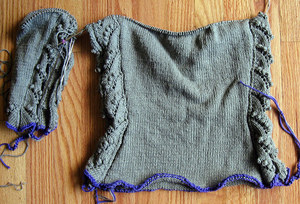
It's a testament to the quality of Calmer that I see absolutely no change in the yarn, despite all that ripping and re-knitting.
My first thought was that I'd migrate the motifs from the front of the sleeve, around to the back seam in preparation to run the motifs up the sleeve cap. I felt that just running the motif up the seam would look peculiar and unbalanced. Something really needed to pickup the theme, on the outside of the sleeve.
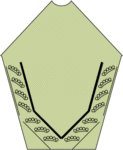
If you are astute, you've already caught my big mistake here, however, I knit about a quarter of the sleeve and realized I just had too much ease worked in and ripped the sleeve to start again. It was only when version two had hit about the halfway point, that I realized my fatal flaw. If the motifs were correct at the outside of the sleeve,they would be flipped at the back seam as shown in the illustration below.
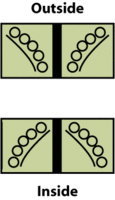
As the great philosopher, Homer, said, "DOH!" That was a real head slapper moment.
I realized that my new calculations worked out perfectly to fit 2 full motifs across the entire hem of the sleeve (a centered full motif on the outside of the sleeve, with two half motifs inside by the seam). I knew I didn't want to carry the outside motif up the entire length of the sleeve, firstly, because it would be too busy and secondly, because when it came time to decrease for the sleeve cap, I'd be left with a lot of lace to wrangle into submission. I decided to just work the outside motif once. I tried maintaining the purl ribs up the length of the sleeve but found it added a sort of sporty feel that was inconsistent with the vast stockinette of the body.

So I took out the purl ribs, after the first repeat.
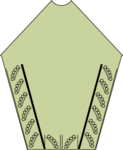
I was getting much closer but there were two things that bothered me. First, the outside repeats just seemed to look uncontained. There were still strong lines delineating the edges of the motifs on all sides except the top. Something just seemed off. I also didn't care for the fact that I had begun the sleeve shaping, while working the first repeat. It meant I had to increase in the purl ribs between motifs. Since I was eliminating the extra purl ribs and motif, it just didn't look cohesive.
After all that, 5 times was the charm.
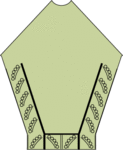
I added a purl ridge to the top of the outside motif, which added the visual container I felt the motifs needed. Additionally, I held off on any sleeve shaping until I had completed the border of repeats, allowing me to increase in the stockinette area, as I had on the body.
I think the final product is consistent with the style of the body and deals with the design concerns I had, in a logical way.
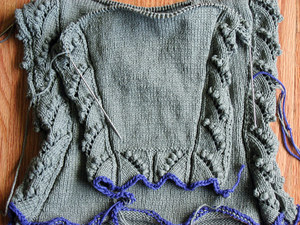
For now, Lily needs to go on temporary hold while I complete a project for a friend. Lucky for me, it's in Calmer too!
I hope to complete that in the next week or two, while I'm traveling and then I'll get back to Lily and all that she entails. I'll try to get a couple tutorials up in the interim, if time permits.
 And let me tell you, there were repeated attempts, various trials, and numerous errors. I lost count of how many times I ripped back poor PD1. But, PD2 is all the better for it. Yay for copious note-taking! I must admit-they look pretty cute together!
And let me tell you, there were repeated attempts, various trials, and numerous errors. I lost count of how many times I ripped back poor PD1. But, PD2 is all the better for it. Yay for copious note-taking! I must admit-they look pretty cute together! My biggest concern at this point, aside from how to handle the ties, oh- and how the embroidered details will turn out (my embroidery skills are rather rusty), is how they will fit on real life Peanut bodies. But, after spending some time with the real life Peanuts at a picnic over the weekend, my estimation is that I think they should fit just fine. *fingers crossed*
My biggest concern at this point, aside from how to handle the ties, oh- and how the embroidered details will turn out (my embroidery skills are rather rusty), is how they will fit on real life Peanut bodies. But, after spending some time with the real life Peanuts at a picnic over the weekend, my estimation is that I think they should fit just fine. *fingers crossed* Then again, maybe if I just give them enough paper napkins to hold their attention, they won't care how the dresses fit...
Then again, maybe if I just give them enough paper napkins to hold their attention, they won't care how the dresses fit...













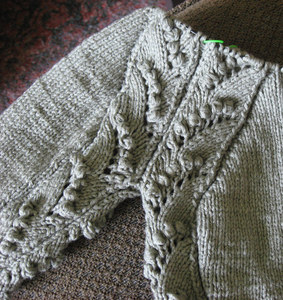

























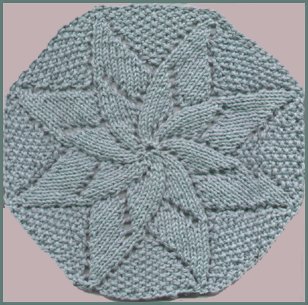
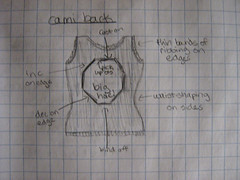
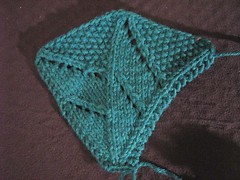
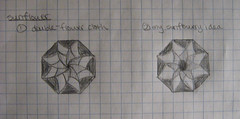
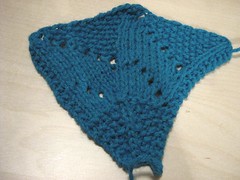
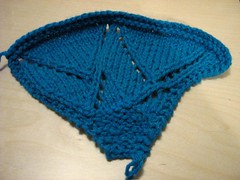
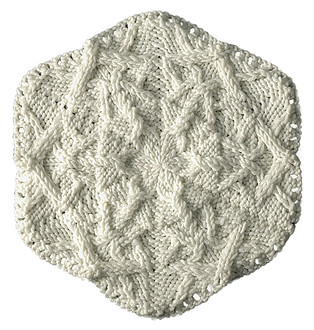
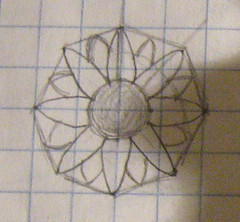
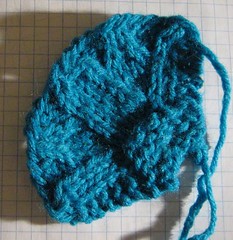
![[calpremiere.jpg]](https://blogger.googleusercontent.com/img/b/R29vZ2xl/AVvXsEiy0wh_95AcwniXEoBtZoHC2yUGJ2XuU8O_-D10FxvaeOSiaAAZM1J1JUHI-8zfGrMG6XFuO6WtsDA4bnq_jySFC87TnR_W_sP1M8F3Qm7KH-Rd4DMFp-C4FxTnvsq5uT1cptxd-XgQHng/s1600/calpremiere.jpg)
![[calpremieremove.gif]](https://blogger.googleusercontent.com/img/b/R29vZ2xl/AVvXsEjp5NGvZgOE3ghqG0Ksh0c6lFPEO_0hIHk4O2P5pWZ0wWdFS4L7lVQCH-6GkDPyynDaflFO1bc7V2YGCat9AKdSoPMgef2GrBPfe_b6l-llR-Ls7M-2KzYlwBBU_ehpWtIBFM6cdbKlA84/s1600/calpremieremove.gif)